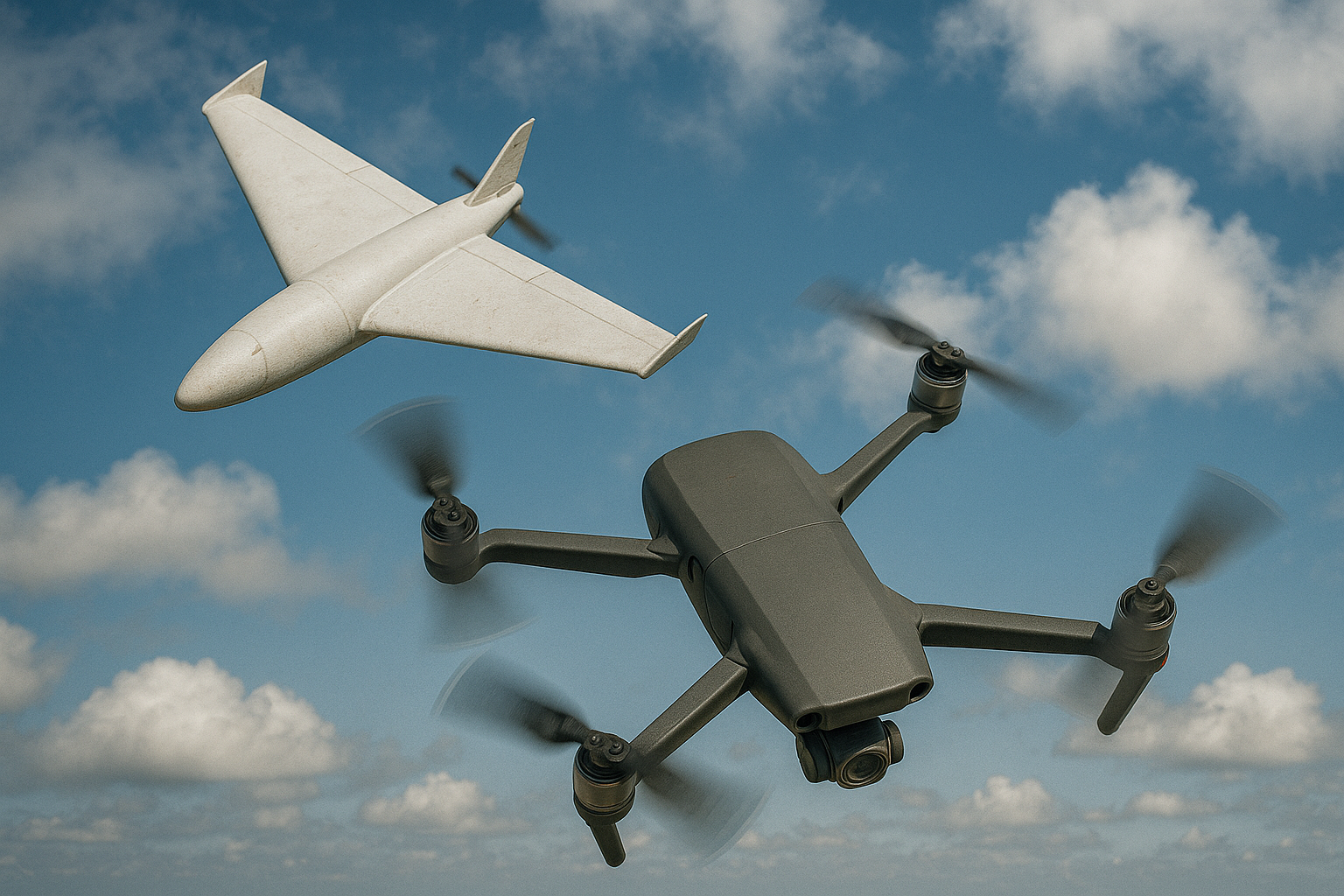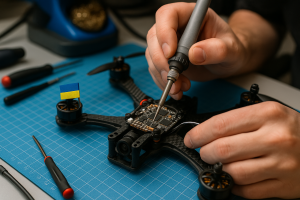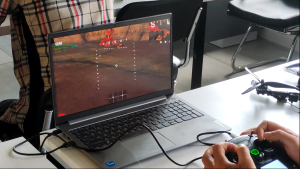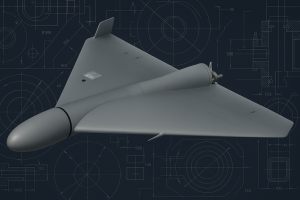Since June 2025, the number of drones used by Russia to attack Ukraine has increased dramatically. We’re no longer talking about 100–200 Shahed drones at a time. The scale is far greater. On June 28, Ukraine’s General Staff reported a record-breaking 477 Shahed drones in the sky during a single attack, with a total of 537 airborne weapons launched.
Just a week earlier, Kyiv suffered a massive drone assault. On the night of June 23, 352 Shaheds were counted over the capital. The consequences were devastating: the hours-long attack left dozens injured and killed 9 people when a drone struck and destroyed a residential building.
During these large-scale attacks, Russia deploys hundreds of Iranian-made Shahed-136/131 kamikaze drones. In total, 5,331 Shahed-136 drones were launched against Ukrainian cities in June alone — an all-time high. And every attack leaves a trail of destruction, not only hitting military targets but also destroying civilian homes and taking innocent lives.
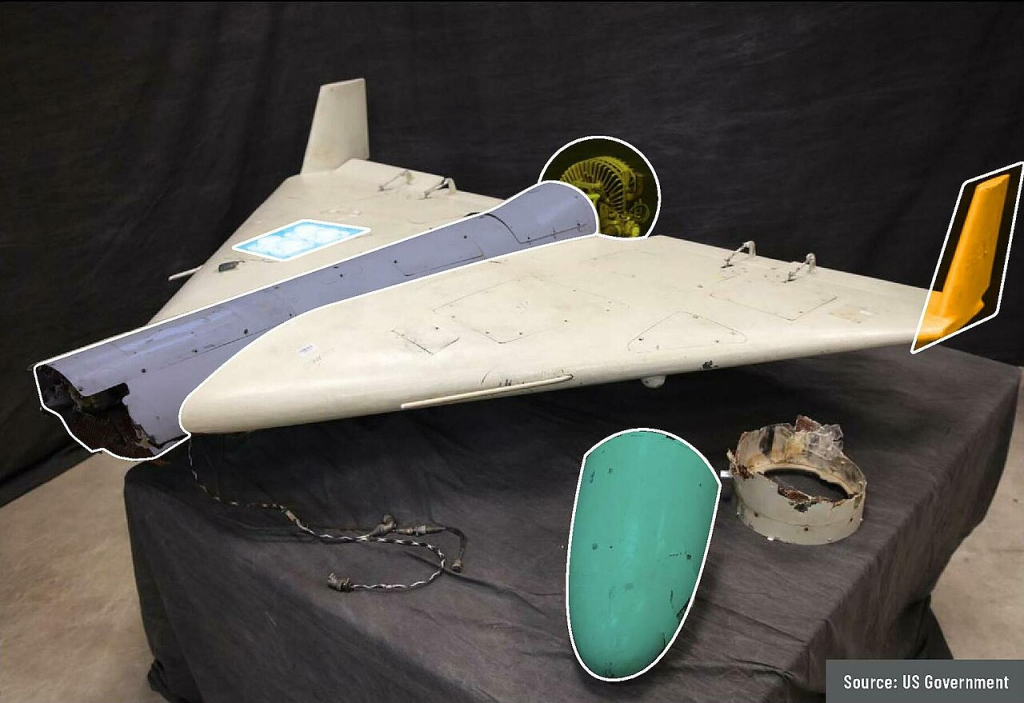
Faced with this escalating threat, Ukraine urgently needs a fast and effective response to defend against these mass assaults.
All available defenses are currently in use: electronic warfare to jam the drones, missiles to shoot them down, and mobile air defense teams. While a large number of drones are being intercepted, many still reach their targets. The reasons are clear: a large number of drones arriving simultaneously, their speed, and attacks carried out in the dark. The solution could be interceptor drones — next-generation interceptors.
In this article, we’ll explore why Ukraine now needs new solutions to stop Shahed drones, what those solutions could look like, and whether anti-drone drones can truly become a powerful weapon in the fight against Russia’s unmanned aerial threats.
What Are Interceptor Drones?
Anti-drone technology first came into public focus in Ukraine in spring 2024. That’s when the platform Brave1 launched a competition to develop drone interceptors capable of countering Russian reconnaissance drones. By July 2024, a new FPV interceptor drone with an X-shaped wing design was unveiled — capable of destroying enemy drones at speeds of 100–160 km/h. Since then, both the number and quality of anti-drone drones have grown significantly.
These are unmanned aerial vehicles specifically designed or modified to destroy enemy reconnaissance and kamikaze drones. Unlike regular FPV drones, interceptor drones are faster, can track and engage moving targets in the air, are equipped with enhanced optics and stabilization systems, and have a longer flight duration. Yes, they’re more expensive — but considering their purpose and the effectiveness they demonstrate in protecting lives and infrastructure, the investment is well worth it.
How Interceptor Drones Work
The main mission of an interceptor drone is to hunt down and eliminate a target. Once a threat is identified, the operator gives the launch command. The drone can be launched by hand, from a launcher, or from a dedicated platform on the ground. From signal to takeoff — it takes less than a minute.
The operator guides the drone toward the target. What happens next depends largely on the drone’s onboard software. Modern systems (which we’ll look at below) can automatically lock onto a target and track it until it’s destroyed.
Interception can happen in several ways:
- The interceptor crashes directly into the enemy drone at high speed — no warhead involved.
- Some interceptors are equipped with warheads that detonate when they get close to the target.
- Less commonly, drones may use nets or entangling devices to physically trap and bring down enemy drones.
You can learn more about how interceptor drones work in detail in the full article.
Defending Against Aerial Attacks: How It Works
The massive scale of Shahed drone strikes has become a serious challenge for Ukraine’s air defense forces. The main line of defense has been mobile units equipped with machine guns, MANPADS (man-portable air-defense systems), or anti-aircraft guns (ZU). Using pickup trucks and armored vehicles, these teams patrol areas, trying to detect and shoot down both reconnaissance and kamikaze drones.
But there are major difficulties:
- Overwhelming numbers: Hundreds of drones often attack at once. There simply aren’t enough mobile teams to cover the entire area, spot all the targets, guide weapons to them, and shoot with accuracy.
- Altitude issues: Shahed drones now fly at higher altitudes, making it harder to hit them with heavy machine guns.
- Night attacks: Most strikes happen at night. While Shaheds can be spotted visually during the day, at night they can only be heard. Thermal imaging helps, but not enough for full visibility. Gunners often have only a few seconds to react — sometimes not enough to take accurate aim.
Mobile defense teams operate under constant risk, especially near the front lines. When Shaheds strike, they are often followed by enemy FPV drones that can fly 20–30 kilometers deep into Ukrainian territory. In such cases, teams are forced to operate from a distance to reduce the risk of being targeted themselves.
In addition to mobile units, Ukraine also uses other defense methods: anti-aircraft systems, missiles, and complex defense networks that help intercept at least part of the threat. But there are challenges here too — missiles are expensive, and gun-based systems are not always fast or mobile enough.
That’s why Ukraine is now focused on finding a solution that combines all key factors: speed, accuracy, mobility, and affordability. After all, the cost of air defense systems is a critically important issue for Ukraine.
The Cost Factor
Each attempt to shoot down an enemy drone comes with a price — the cost of the ammunition. For missiles, that price often exceeds hundreds of thousands of U.S. dollars. Meanwhile, the average cost of a Shahed drone — the very target — is around $50,000. Mobile teams using machine guns are a more cost-effective option, but as outlined earlier, this approach has significant limitations.
That’s where anti-drone interceptor drones come in — offering a cheaper and more efficient alternative to both missiles and gunfire. One interceptor drone costs far less than a Shahed, and much less than a missile. Ukrainian-made models are available for under $10,000. This makes interceptor drones a promising solution to the economic challenge of defending Ukraine from the growing number of attacking and reconnaissance drones.
According to Reuters, Ukraine has already established domestic production of various types of interceptor drones — and more than five models are already in active use on the front lines.
Ukrainian Interceptor Drones: Current Innovations
Today, several Ukrainian teams are actively developing anti-drone interceptor technology — and their results are already proving effective not just in tests, but on the actual battlefield.
One standout project comes from the Ukrainian team Wild Hornets, working in collaboration with Defense Express. Together, they’ve developed the Sting — a high-speed interceptor drone capable of reaching altitudes of up to 3,000 meters and speeds of 160–280 km/h. It can carry up to 0.5 kg of explosives and is already undergoing upgrades to integrate AI-powered target acquisition. With a cost of just $5,000–$10,000, Sting is significantly cheaper than the Shahed drones it targets. Dozens of successful interceptions have already been recorded using this drone.
Another notable development is the Tytan Interceptor, which has been undergoing successful testing in Ukraine since late 2024. Developed in partnership with Germany, the Tytan can reach altitudes of up to 2,000 meters, with a flight range of 15–20 km and speeds up to 300 km/h. Built on an AI-driven platform, Tytan offers enhanced capabilities for target detection, tracking, and classification. Full automation with AI navigation is planned for future versions. Control is handled via a standard game controller — making operation both intuitive and efficient. And the cost? Under €20,000 — a remarkably affordable price for a weapon that can effectively destroy enemy reconnaissance drones, including the Orlan-10 and Zala.
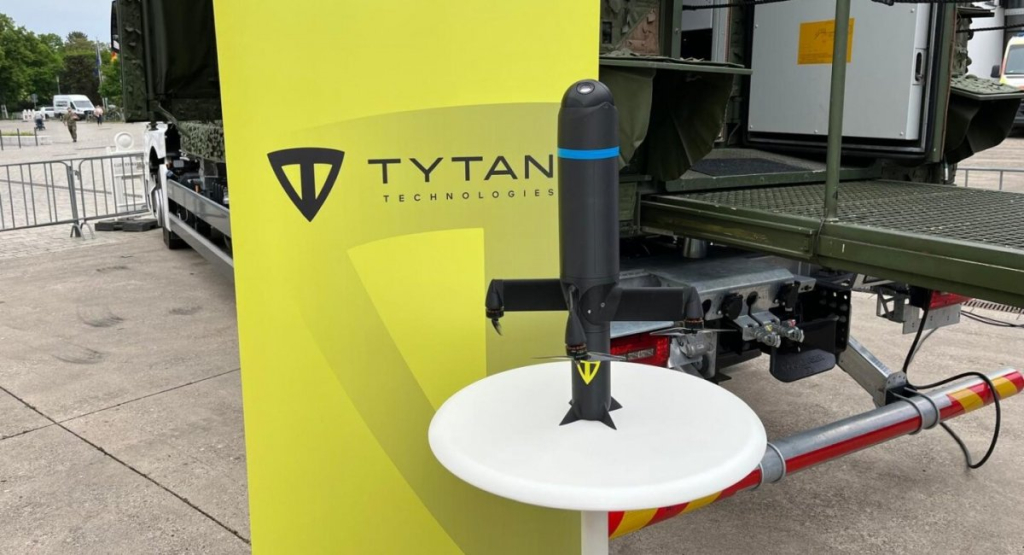
Interceptor S, photo – Hartpunkt
Another notable example is the General Cherries AIR drone. It’s an efficient, cost-effective interceptor priced at just 39,900 UAH. This compact drone can fly to altitudes of up to 6,000 meters and reach speeds of 160 km/h, staying in the air for up to 35 minutes. To date, General Cherries has successfully taken down over 300 enemy drones. The manufacturer already produces thousands of units and is aiming to scale up to tens of thousands per month. Each drone carries 1.5 kg of explosives, and development is underway to integrate advanced software for automatic targeting and tracking.
These are real, working examples of how Ukrainian developers — often in partnership with allies — are creating practical, affordable, and highly effective solutions that could soon rival or even replace some traditional air defense systems. The shift has already begun — hunter drones are now actively patrolling the skies, taking down enemy UAVs.
Interceptor Drones in the War in Ukraine
Ukrainian anti-aircraft drones are an effective weapon. This is confirmed by the military, who share videos of drone-versus-drone combat and report successful deployments.
The “Darknode” unit of the 412th Nemesis Regiment managed to destroy over 100 enemy drones (76 Shahed-136 and 24 Gerbera). This was reported by Militarnyi, citing a statement from the Unmanned Systems Forces. Within a few weeks, the military improved their previous result by 40 additional downed drones. More to come.
Another real example of the successful use of anti-aircraft drones against Shaheds was published on May 19 by Wild Hornets. The video shows how the Sting drone shoots down a Shahed by approaching it from the drone’s blind spot. In this case, VR control and a thermal imaging camera were used to increase maneuvering precision.
Turning drones into an effective tool for intercepting and destroying reconnaissance and attack UAVs is possible. The work continues.
Guidance Systems: How to Improve Ukrainian Interceptor Drones
The main goal for developers of anti-aircraft drones is to ensure effective defense against enemy drone attacks. The capabilities of interceptors can be improved by introducing modern technologies — machine vision, AI, guidance systems, and more.
Without enhanced capabilities, intercepting large numbers of enemy drones simultaneously and with maximum efficiency becomes a difficult task. What could help? One possible solution is automatic guidance systems. While such systems already exist and are successfully used in combat for regular FPV drones, similar developments for anti-aircraft drones are still underway. In the case of interceptor drones, using guidance systems is more complicated due to their much higher speeds and the fact that they are mostly operated at night. However, there is hope that a guidance system capable of demonstrating high accuracy in targeting enemy drones in the sky will eventually be developed and widely implemented in the military.
Such systems could be developed based on already existing and successful guidance technologies — for example, the VGI-9.
The VGI-9 guidance module is already being used to upgrade drones from popular manufacturers. This allows for improved targeting accuracy with FPV drones — both against stationary and moving targets (at speeds of up to 80 km/h). Automatic targeting enables precision of up to 0.5 meters. In addition, the drone gains autonomy: after the target is locked (the operator places the cursor, and the software tracks the target using pixel analysis and machine vision), the system maintains the course and carries out the strike. Resistance to electronic warfare (EW) is also improved, enabling the drone to continue its mission even in the presence of active jamming.
According to our estimates, around 10% of newly produced drones are already equipped with automatic guidance systems — and are successfully completing combat missions in the skies over Ukraine.
Why There Still Isn’t an Army of Interceptor Drones in the Sky
The economic benefit of using drones against enemy reconnaissance and strike UAVs is undeniable. The cost of a missile is often higher than that of the target itself. In contrast, drones are economically viable, especially in drone-versus-drone combat. Moreover, interceptors are capable of dealing with large numbers of incoming threats.
So why are missiles, machine gun fire, and anti-aircraft guns (ZU) still predominantly used in the skies over Ukraine instead of manoeuvrable, affordable, and practical drones?
The first limiting factor is speed. Yes, Ukrainian drones are already quite fast. But Shahed drones fly at speeds of up to 200 km/h and can accelerate even further during an attack — sometimes exceeding 300 km/h. Therefore, anti-aircraft drones must be faster than 200 km/h to catch up and destroy a Shahed before it strikes.
However, it’s important to consider that a “hunter” drone also needs additional time — to detect the target, take off, accelerate, and reach the required speed. As a result, most current Ukrainian drone models are still unable to intercept and destroy 100% of strike targets. But they are proving highly effective at hunting down reconnaissance drones.
Secondly: the human factor influences. Even with partial automation, the operator still has to manually identify the target and aim the cursor — this requires a high level of skill. And here it’s important to understand: it is possible to learn how to operate modern interceptor drones. But this demands prior hands-on experience with drones in real-world conditions, not just in simulators. Training is underway — many drone control schools are already offering courses for operators of guided and anti-aircraft drones.
When talking about the effectiveness of hunter drones, one more challenge must be mentioned. And it comes from the outside — wind, rain, poor visibility, and other conditions that depend solely on weather and the environment. Shaheds fly in any conditions — day or night. At this point, anti-aircraft drones still lack the flight stability in difficult weather that would allow for a greater number of successful interceptions.
Achieving perfect strike accuracy — “10 out of 10” — is truly possible. But it’s a matter of time. What’s needed is large-scale integration of modern automation systems. High-quality operator training is also essential. Equally important is the current lack of close integration with air defense systems — unified control centers and coordination of drones, electronic warfare (EW), turrets, radar systems, and more. As long as there is no coordination, a 100% success rate cannot be achieved.
What’s Ahead?
If we consider the possibility of fully replacing current air defense systems with anti-aircraft drones, the conclusion is clear — interceptors can become a powerful defensive force in Ukraine’s skies. Work is ongoing, and it’s safe to say that very soon, many fast “birds” will be flying overhead, effectively hunting enemy drones. Ukraine is doing everything currently possible to make this a reality.
A gradual increase in the number of drones equipped with guidance systems and higher flight speeds is expected. Efforts are underway to integrate anti-aircraft drones into a unified network with air defense forces, ensuring coordinated and efficient operations.
According to the Air Command “West”, special anti-aircraft drone units are already being created and trained within Ukraine’s Armed Forces. This initiative, approved by the National Security and Defense Council, aims to form new interceptor companies. The goal is to significantly boost efficiency in countering Shahed drones.
So, Will Anti-Aircraft Drones Dominate the Sky?
This could happen in the relatively near future. And we’re not just talking about individual drones, each controlled by a separate operator. The goal is for a single operator to coordinate swarms of drones, which will become a powerful force protecting Ukrainian territories.
On July 3, a Memorandum was signed in Denmark to scale up the production of unmanned systems for Ukraine. The plan includes increasing the production of drones — including interceptors — and developing new solutions to counter cruise and ballistic missiles. The use of drones has already become a defining feature of this war. Increasing the number of anti-aircraft drones in the skies over Ukraine is a real path toward effectively defending our land and people.
Contact us to get detailed information about the VGI-9 drone guidance system.
Follow our updates on social media and YouTube – there you will find:
✅ Exclusive materials on the development, testing, and combat use.
✅ Useful analytical content on the war and the role of FPV drones in modern combat operations.
✅ The latest news and insights from the world of military technologies.
📌 Join us:
🔗 YouTube: VGI-9 on YouTube
📸 Instagram: We are on Instagram
🎯 TikTok: We are on TikTok



